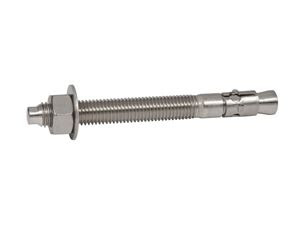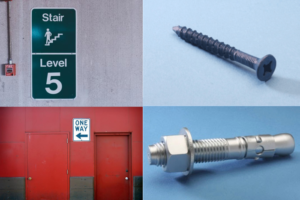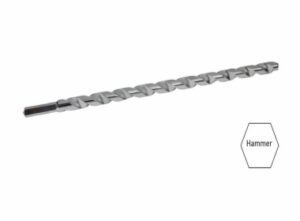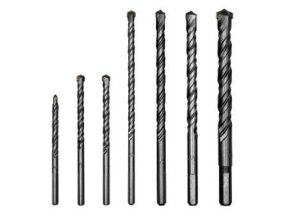Corrosion results in billions of dollars of lost income across the United States. Determining the best concrete fasteners for corrosion resistance is a primary factor in achieving cost efficiency for long-term maintenance.
Fasteners will corrode and may lose some load carrying capacity if they are installed in corrosive areas or exposed to different types of corrosive materials. The areas and materials that can create a corrosive environment range from pressure treated wood (ACQ), salt water, ocean salt air, fertilizers, and exposure to two dissimilar metals and other elements that are corrosive.
Types of Stainless Corrosion
-
 Uniform Attack
Uniform AttackThis type of general corrosion occurs when there is an overall breakdown of the passive film. The entire surface of the metal will show a sponge type of façade because halogens penetrate the passive film of stainless and allow for corrosion. Active halogens are fluorine, chlorine, bromine, iodine and astatine.
-
Crevice Corrosion
This type of corrosion with stainless fasteners in seawater environments due to the low PH of salt water. Chlorides pit the passivized surface in the area where low PH saltwater attacks the exposed metal. Lacking the oxygen to re-passivize, corrosion spreads. This corrosion is common in oxygen-deprived spaces, i.e. under a fastener head.
-
Pitting
This type of corrosive action is the result of passivation in a small spot on stainless steel that becomes an anodic. The passivized part remains a cathode, and causes pit-type corrosion.
-
Galvanic Corrosion
Putting two dissimilar metals in a electrolyte produces an electrical current. The current flows from the anodic metal and towards the cathode metal. This process will slowly remove material from the anodic metal. Seawater can act as an electrolyte, which is the reason that galvanic corrosion is a common problem. 316 stainless steel may be most effective in a marine environment.
-
Intergranular Corrosion
Stainless steels contain a small amount of carbon. At extremely high temperature, as in welding, the carbon uses chrome to form chromium carbide around it, and creates areas of chrome deficiency that lessen corrosion protection.
-
Stress Corrosion
Also eferred to as stress corrosion cracking or chloride stress corrosion. means Chlorides can be the greatest antagonists against stainless steel. They’re a common chemical found in many environments. Luckily, the effects on stainless can be small in most applications. However, in some environments, such as indoor swimming pools, the effects are severe and possibly hazardous. If a stainless part is under tensile stress, pitting may increase and cracking could occur. Stainless steel is a steel alloy with a minimum of 11% chromium content by mass, and is commonly used to prevent corrosion. However, stainless steel is stainless, not stain proof, which means that stainless steel wedge anchors may corrode in some specific types of applications. Nevertheless, stainless steel remains as an economical choice with which to fight against the threat of corrosive elements.
The difference between stainless steel wedge anchors and carbon steel (i.e. zinc plated and hot-dipped galvanized wedge anchors) is the amount of chromium present. Carbon steel will rust when exposed to moisture and air. The rust, or iron oxide film, is very active and will accelerate corrosion by forming even more iron oxide. Sufficient amounts of chromium present on stainless steel provide a film of chromium oxide that prevents corrosion from spreading.
Hot dipped galvanized wedge anchors are anchors that have a zinc coating through a method of galvanizing iron or steel by passing it through a bath of molten zinc. This process is to prevent galvanic corrosion. Hot dipping steel is a procedure more than 150 years old. The goal is to create a physical barrier for the exposed steel. Hot dipped galvanized wedge anchors are often the preference over stainless steel because of their lower cost.
General outline of different types of wedge anchors
The cost of wedge anchors increases as higher rust resistance is available. Here is a general outline of the different types of wedge anchors and their corrosion resistance:
 Zinc plated wedge anchors provide the least rust resistance and are the least costly but are not recommended for outdoor use. These anchors are excellent for indoor use or in a location where moisture is not present.
Zinc plated wedge anchors provide the least rust resistance and are the least costly but are not recommended for outdoor use. These anchors are excellent for indoor use or in a location where moisture is not present.
Hot dipped galvanized wedge anchors provide a medium level of corrosion resistance. They are also suitable for use outdoors or in humid environments. These anchors cost about twice as much as the zinc plated anchors.
Stainless steel wedge anchors in the 303 and 304 designations provide excellent corrosion resistance and work well in most corrosive environments. Estimates show they cost about 2x as much as the hot dipped anchors. The 316 stainless steel provides the greatest corrosion resistance in the most environments. These stainless steel anchors cost about twice as much as the 303 or 304 stainless steel.
If wedge anchors are the best concrete fasteners for corrosion resistance for your application, make sure that you purchase the correct one for outdoor use. Because there are numerous variables involved in corrosion, inspections and regular maintenance should always be a part of the schedule. Including the checking of any and all fasteners. Qualified advice specific to applications may also be sought as an additional safeguard against the danger of corrosion.
Concrete Fastening Systems, Inc. has been involved in the concrete anchor business since 1981 through working on job sites. They also do so by meeting with engineers and architects.













